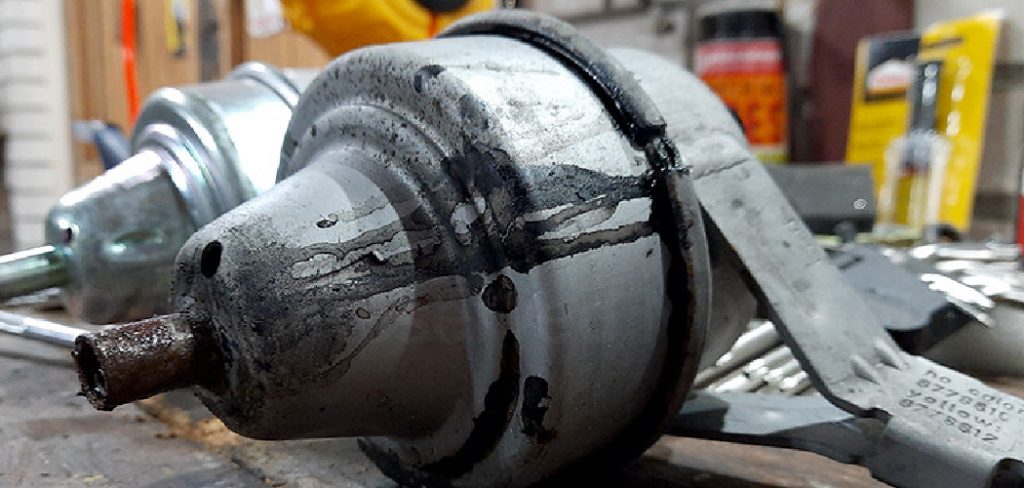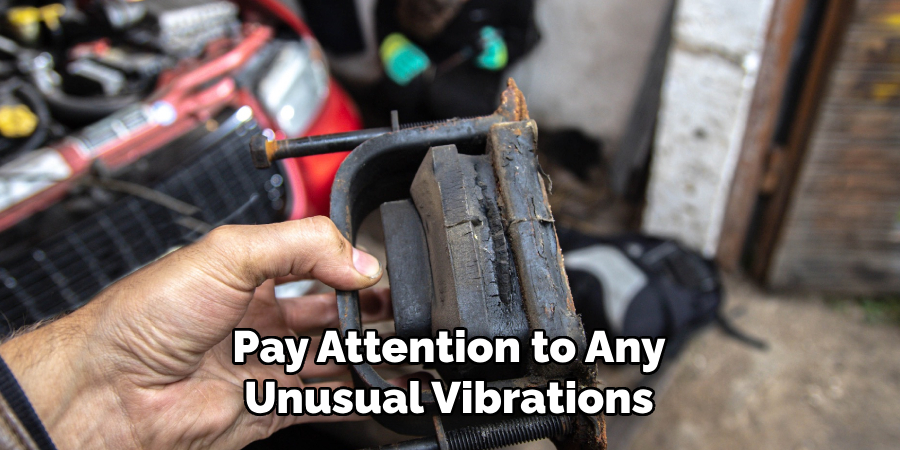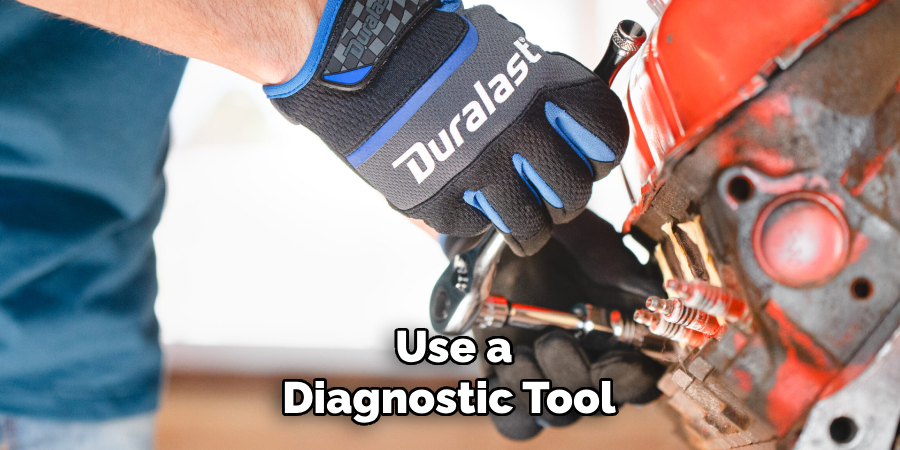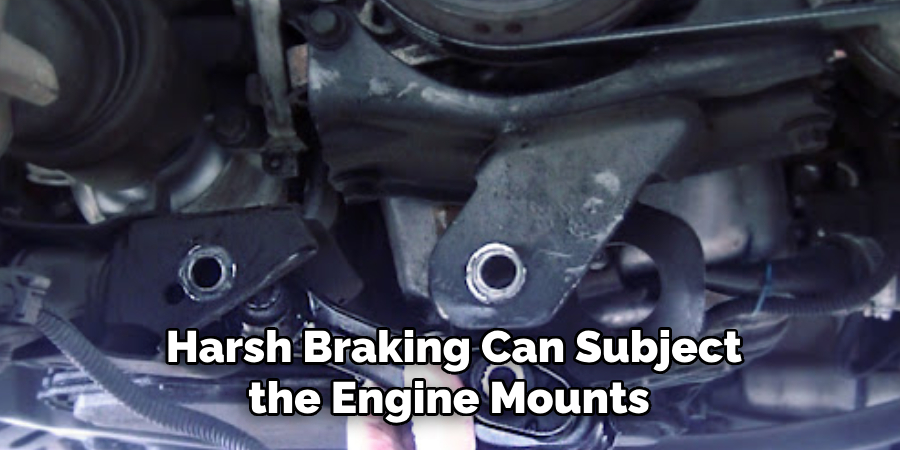Are you experiencing excessive vibration or noise while your car is running? It could be a sign that your engine mounts need maintenance.
Engine mounts play a crucial role in providing stability and support to the engine, ensuring smooth operation and reducing vibrations. Regular maintenance of engine mounts is essential for preserving their functionality and prolonging their lifespan. This section will explore some key tips and practices to help you effectively maintain engine mounts and keep your vehicle running smoothly.

By following these guidelines on how to maintain engine mounts, you can ensure optimal performance and prevent potential issues related to engine mounts. Let’s dive in and discover how to properly care for and maintain these vital components of your vehicle’s engine system.
What are the Benefits of Maintaining Engine Mounts?
Before we begin the maintenance process, let’s first understand why maintaining engine mounts is essential.
- Improved Performance: When your engine mounts are in good condition, they provide stable support to the engine, allowing it to operate smoothly and efficiently. This results in improved performance and better fuel efficiency.
- Reduced Vibrations: Regular maintenance helps prevent excessive vibrations that can cause discomfort and affect the overall driving experience.
- Protection for Other Components: Engine mounts also act as a buffer between the engine and other components, protecting them from potential damage caused by excessive movement or vibrations.
- Cost Savings: Regularly maintaining your engine mounts can prevent costly repairs or replacements in the future, saving you time and money.
Properly maintaining engine mounts provides many benefits. Let’s now move on to some practical tips for maintaining these crucial components.
What Will You Need?
Before we dive into the specific steps for maintaining engine mounts, let’s review some basic tools and materials you might need for this task. These can include:
- A jack or jack stands to elevate your vehicle
- A socket and ratchet set
- A torque wrench
- Engine mount replacement parts (if needed)
- Safety equipment such as gloves and protective eyewear
It is also important to consult your vehicle’s owner manual before beginning any maintenance procedures, as it may have specific instructions or recommendations for your particular make and model.
10 Easy Steps on How to Maintain Engine Mounts
Step 1. Inspect for Wear and Tear
Begin by visually inspecting the engine mounts for any signs of damage or wear. Look for cracks, splits, or excessive corrosion on the rubber components, as these are common indicators that the mounts may deteriorate. Additionally, check for any sagging or misalignment of the mounts, as this can affect the positioning of your engine. Pay attention to any unusual vibrations, clunking sounds, or excessive engine movement during operation, as these can also point to failing engine mounts. Regular inspection is crucial in catching problems early before they escalate into more significant issues.

Step 2. Check Mount Bolts
Inspect the mounting bolts that secure the engine mounts to the vehicle frame. Ensure they are tightened to the manufacturer’s recommended torque specifications. Loose or damaged bolts can lead to improper engine alignment and increased vibrations. If any bolts are missing or damaged, replace them promptly with the appropriate ones to maintain the integrity of the engine mount system. If you need clarification on the torque specifications, consult your owner’s manual or a professional mechanic.
Step 3. Clean and Lubricate
Regularly clean the engine mounts to remove dirt, debris, and oil buildup. Use a mild detergent and water solution to scrub the rubber components gently. Avoid using harsh chemicals or solvents that can damage the rubber. After cleaning, apply a silicone-based lubricant to the mounts to preserve their flexibility and reduce friction. Avoid getting any lubricant on the metal components, as this can attract dirt and debris.
Step 4. Inspect Supporting Components
Examine the supporting components, such as brackets and bushings, that connect the engine mounts to the engine and the vehicle frame. Look for signs of wear, damage, or deterioration. Replace any worn or damaged components to ensure proper functioning and longevity of the engine mounts. Remember to check the bolts and nuts that secure these components, as they can also become loose or damaged over time.
Step 5. Perform Regular Maintenance
In addition to visual inspections, schedule regular maintenance checks with a qualified mechanic. They can assess the condition of the engine mounts and perform any necessary adjustments or replacements. Regular maintenance helps to identify and address potential issues early, preventing further damage and ensuring optimal performance of the engine mounts. Remember to keep a record of your maintenance checks for future reference.
Step 6. Monitor Engine Vibrations
Pay close attention to any unusual engine vibrations during operation. Engine mounts are designed to absorb vibrations and keep the engine stable, so excessive vibrations can be a sign of worn or failing mounts. If you notice that the vibrations are more intense when idling or during acceleration, it could indicate an issue with the mounts. Use a diagnostic tool, if available, or consult a professional mechanic to pinpoint the cause. Addressing abnormal vibrations promptly can prevent further damage to the engine or surrounding components.

Step 7. Replace Damaged Mounts
If you discover that one or more engine mounts are damaged or excessively worn, it is essential to replace them without delay. Driving with faulty engine mounts can lead to unsafe driving conditions and additional strain on your vehicle’s engine and transmission. Always use high-quality, compatible parts recommended by the manufacturer when replacing mounts. You may need a jack to lift the engine slightly when removing and replacing mounts, so ensure you follow proper safety protocols during the process.
Step 8. Avoid Harsh Driving Conditions
To prolong the life of your engine mounts, try to avoid harsh driving habits or conditions that can put unnecessary stress on them. Rapid acceleration, sudden braking, and driving over rough terrain can contribute to increased mount wear. Practice smooth, steady driving and keep your vehicle in good condition to help reduce the strain on the engine mount system. Ensure your engine is properly balanced and aligned to prevent uneven stress distribution.
Step 9. Address Oil Leaks Promptly
Engine oil leaks can significantly affect the durability of engine mounts. Oil can degrade the rubber components of the mounts over time, causing them to lose their elasticity and functionality. Inspect your engine bay regularly for leaks and repair any issues as soon as they are identified. Keeping the engine compartment clean and free of oil will help extend the lifespan of the mounts and maintain their efficiency. Additionally, regularly changing your engine oil according to the manufacturer’s recommendations can help prevent leaks and preserve the integrity of the mounts.
Step 10. Test Drive After Maintenance
Once maintenance or replacements are complete, take your vehicle for a test drive to ensure everything functions correctly. Pay attention to how the car handles, whether vibrations have reduced, and if there are any unusual noises. A successful test drive should confirm that the mounts are securely in place and functioning correctly. If any issues persist, consult a professional mechanic to re-evaluate the situation and make necessary adjustments.

By following these steps and maintaining a proactive approach to engine mount care, you can ensure the smooth operation of your vehicle and prevent costly repairs down the road.
5 Things You Should Avoid
- Neglecting Regular Inspections: Engine mounts are critical in providing stability and reducing vibrations in your vehicle. Neglecting regular inspections can lead to worn-out or damaged mounts, compromising your car’s overall performance and safety.
- Ignoring Signs of Wear and Tear: Look for signs such as excessive engine movement, unusual noises, or vibrations. Ignoring these warning signs can result in further damage to the engine mounts and other vehicle components.
- Overloading or Excessive Weight: Engine mounts are designed to support the weight and vibrations of the engine under normal operating conditions. Overloading your vehicle or carrying excessive weight can strain the mounts unnecessarily, leading to premature wear and potential failure.
- Poor Driving Habits: Aggressive driving, sudden acceleration, and harsh braking can subject the engine mounts to increased stress. Practice smooth and controlled driving to minimize unnecessary strain on the mounts and prolong their lifespan.
- Neglecting Regular Maintenance: Regular maintenance, including changing fluids and filters as the vehicle manufacturer recommends, can help prevent engine issues that may indirectly affect the engine mounts. Neglecting routine maintenance can lead to engine problems that stress the mounts more.

By avoiding these common pitfalls and following proper maintenance practices, you can extend the lifespan of your engine mounts and ensure optimal vehicle performance and safety.
Conclusion
Proper care and maintenance of engine mounts are essential for your vehicle’s overall health and safety.
By combining regular inspections, prompt attention to warning signs, and adopting good driving habits, you can prevent costly repairs and extend the lifespan of your engine mount system. Furthermore, ensuring that proper components and tools are used during replacements will preserve the integrity of your vehicle’s performance. Engine mounts may not always be the most visible part of the vehicle, but their role in reducing vibrations, maintaining engine stability, and ensuring a smooth driving experience is undeniable.
Hopefully, the article on how to maintain engine mounts has provided you with valuable insights and practical steps to keep your vehicle running smoothly. So, incorporate these tips into your routine maintenance schedule for a hassle-free driving experience. Happy driving!
Edmund Sumlin is a skilled author for Metal Fixes, bringing 6 years of expertise in crafting a wide range of metal fixtures. With a strong background in metalwork, Edmund’s knowledge spans various types of fixtures, from decorative pieces to functional hardware, blending precision with creativity. His passion for metalworking and design has made him a trusted resource in the industry.
Professional Focus:
- Expert in Metal Fixtures : Edmund aesthetic specializes in creating durable and innovative metal fixtures, offering both appeal and functionality. His work reflects a deep understanding of metalworking techniques and materials.
- Sustainability Advocate : He is dedicated to using sustainable practices, ensuring that every fixture is crafted with eco-friendly methods while maintaining high-quality standards.
In his writing for Metal Fixes, Edmund provides valuable insights into the latest trends, techniques, and practical advice for those passionate about metal fixtures, whether they are professionals or DIY enthusiasts. His focus on combining artistry with engineering helps others discover the true potential of metal in design.


